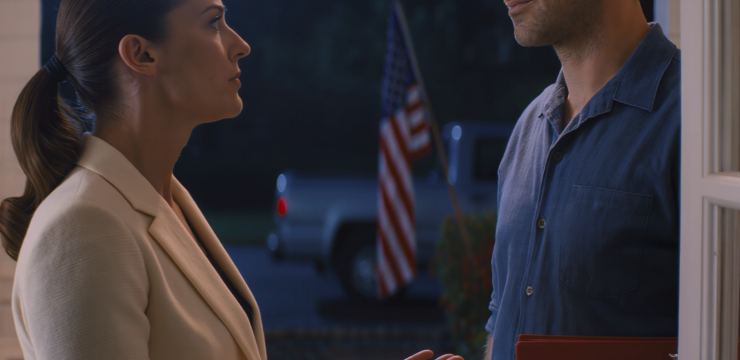The internet is full of clever puzzles, but every now and then, a riddle appears that completely captivates people and sets social media ablaze. One of the most recent examples is the Cheating Wife Riddle—a deceptively simple brain teaser that has stirred up debate, curiosity, and frustration all over the web.

What makes this riddle so effective isn’t just the subject matter—it’s the way it preys on human assumptions and our tendency to overthink. At first glance, it seems like a straightforward logic puzzle: a husband suspects his wife is cheating, devises a plan to catch her, and her reaction confirms his suspicion. The challenge is for the reader to figure out what his plan was and how it revealed the truth. But the moment you start digging into it, you realize the solution isn’t obvious. And that’s exactly why people can’t stop thinking about it. So what is it about this riddle that has made it go viral? First, let’s explore how it works. The Cheating Wife Riddle doesn’t rely on complex facts or detailed stories. Instead, it’s all about reading between the lines, questioning behavior, and staying focused on the core idea. One popular version presents the husband showing his wife a photo and casually asking, “Who took this picture?” The photo itself may be innocent enough, but her response is key.
If she hesitates, deflects, or offers an inconsistent answer, it suggests something more is going on. Her words aren’t what give her away—it’s her reaction. This is where many people go wrong. They search for elaborate clues, assuming the solution must be buried in the details, when in fact the riddle is testing how well you can observe human behavior. It’s not about catching her in the act—it’s about catching her in a lie. What trips most people up is their own mind. When presented with the riddle, people tend to overthink it.
They assume there’s a complicated backstory or hidden meaning when the real answer is usually right there in plain sight. That’s what makes the riddle so infuriating—and so addictive. There are three major reasons why riddles like this catch fire online. First, they create cognitive dissonance. Our brains don’t like it when something doesn’t add up. When a riddle challenges what we think we know, our minds get stuck in a loop trying to solve it. Second, riddles like this are made for sharing. People love the feeling of solving something others can’t, and they’re quick to forward it to friends with a challenge: “Bet you can’t figure this one out.” Finally, there’s the irresistible thrill of the “aha!” moment. That instant when everything clicks and you realize how simple the answer is—that’s what keeps us coming back for more. Solving riddles like the Cheating Wife puzzle isn’t just about being clever—it’s about shifting your mindset.
@markmud08 Cheating Wife #puzzle #markmud08 #viral #followme #fyp #foryoupage ♬ original sound – MarkMud08
The best way to approach puzzles like this is to stay grounded. Don’t add extra information, don’t chase red herrings, and don’t assume the obvious answer is wrong just because it seems too easy. Think critically about what’s actually being asked and watch how people behave in the scenario. The riddle succeeds because it blends logic and psychology. It asks you to not only think about facts but also consider human nature. The husband’s test isn’t physical—it’s emotional. He asks something ordinary, but her response is extraordinary. The riddle works because it is subtle. It plays on our natural tendency to overcomplicate things and overlook simple truths. We often expect puzzles to be difficult and overlook what’s staring us in the face. That’s the secret behind the viral appeal. These riddles challenge us not just mentally, but emotionally. They tap into curiosity, frustration, competitiveness, and the joy of discovery. That’s why they spread so quickly and leave such a strong impression. They remind us that sometimes the hardest part isn’t solving the puzzle—it’s unlearning what we thought we knew. So if you’re still scratching your head over the Cheating Wife Riddle, you’re not alone. But remember: the answer was probably right there from the start, waiting for you to see it. The next time you encounter a brain teaser that seems too simple to be tricky, pause and consider—maybe, just maybe, that simplicity is the trick.





